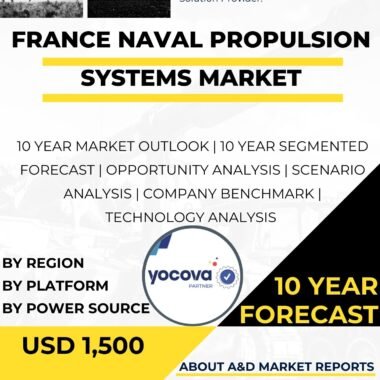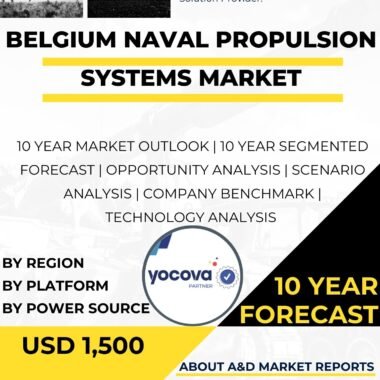Description
Malaysia Naval Propulsion Systems market has grown steadily in recent years. This growth highlights the country’s commitment to strengthening its naval fleet and upgrading its maritime capabilities. Naval propulsion systems are essential components of modern warships, providing the power, speed, and maneuverability needed for effective operations at sea.
Security Drivers of the Malaysia Naval Propulsion Systems Market
Malaysia is a maritime nation with a long coastline and wide territorial waters. It faces various security challenges, such as border protection, maritime surveillance, and countering illicit activities. Advanced naval propulsion systems help the Royal Malaysian Navy (RMN) maintain an agile and credible presence across its maritime zones.
Technological Advancements in Malaysia Naval Propulsion Systems Market
Modern naval propulsion systems offer significant advantages. Technologies such as gas turbines, diesel engines, and electric propulsion systems can deliver high speed, long endurance, and improved fuel efficiency. These enhancements increase the operational range and capability of naval vessels.
Naval platforms such as frigates, corvettes, patrol vessels, submarines, and amphibious ships require propulsion systems tailored to their mission needs. Choosing the right propulsion system ensures optimal performance and flexibility across different maritime operations.
Propulsion Modes in the Malaysia Naval Propulsion Systems Market
Advanced propulsion systems support several propulsion modes, including shaft-driven propellers, waterjets, and azimuth thrusters. This versatility helps vessels operate in diverse environments, such as shallow waters, congested areas, or open sea conditions. It also allows greater maneuverability and adaptability during complex missions.
Industrial Development Linked to the Naval Propulsion Systems Market in Malaysia
Malaysia values international cooperation in acquiring and developing propulsion technologies. Partnerships with global defense companies provide access to advanced propulsion systems, technical expertise, and integration support. These collaborations promote technology transfer and strengthen Malaysia’s domestic industrial base.
Malaysia is also investing in local research and development to build indigenous propulsion technologies. Encouraging homegrown innovation supports long-term self-reliance and strengthens the national naval defense industry.
Challenges Facing the Naval Propulsion Systems Market in Malaysia
Despite strong growth, the market faces several challenges:
-
High costs: Developing, procuring, and testing advanced propulsion systems requires large financial investments.
-
Safety and environmental standards: Propulsion systems must meet strict requirements for reliability, emissions, and operational safety.
-
Maintenance and training: Complex propulsion technologies require skilled personnel, regular servicing, and a reliable supply chain for spare parts.
-
Logistics: Ensuring continuous technical support and availability of components is essential for readiness.
Future Outlook for the Naval Propulsion Systems Market in Malaysia
The Naval Propulsion Systems market is expected to expand as Malaysia continues to modernize its naval assets. Advancements in propulsion technology will play an increasingly important role in maritime defense and fleet development.
Malaysia’s participation in regional security initiatives and joint naval exercises will influence future propulsion requirements. Growing interoperability needs with partner navies will drive demand for compatible and advanced propulsion systems.
Conclusion on the Naval Propulsion Systems Market in Malaysia
Malaysia has made strong progress in strengthening its naval propulsion capabilities. Government investment, international partnerships, and local R&D initiatives have supported the integration of modern propulsion systems into the naval fleet. Addressing challenges related to budget limits, safety standards, maintenance, and logistics will be essential to sustaining long-term growth. With continued commitment, Malaysia can enhance its maritime security, protect its territorial waters, and reinforce its overall naval defense posture.




